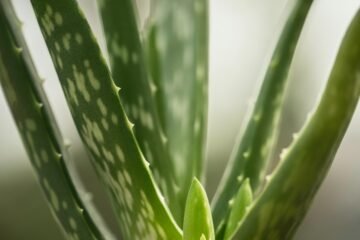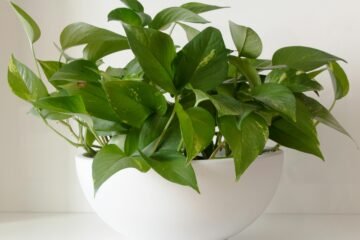From the start of my gardening in 2011, African violets have been one of my most favorite houseplants. African violets are easy to grow and care for, making them ideal for beginners. I have a bunch of African violets. These compact, low-growing plants flower several times a year and are available in a multitude of leaf forms and colors. African violets are identified by a rosette of thick, fuzzy leaves and violet-like flowers that bloom just above the evergreen foliage.
Table of Contents
Common Name: African violet
Botanical Name: Saintpaulia ionantha
Family: Gesneriaceae
Plant Type: Perennial
Mature Size: 6-9 in. tall, 6-9 in. wide
Sun Exposure: Partial
Soil Type: Well-drained but moist
Soil pH: Acidic, neutral
Bloom Time: Spring, summer, fall, winter
Flower Color: White, pink, red, blue, purple
Hardiness Zones: 11-12 (USDA)
Native Areas: Africa
African Violet Care

African violets will flourish in bright, warm, and moist conditions. Keep water from touching their leaves to avoid brown spots. Always remove dead flowers and leaves to encourage growth. Check the soil for moisture regularly to keep the roots happy. Treat these plants like children, balancing their needs for moisture and sunlight while avoiding drafts and extreme temperatures.
Light
African violets prefer bright but indirect sunlight. Direct sunlight can scorch their leaves. Place them near a north or east-facing window, or use sheer curtains to diffuse the light. If natural light is insufficient, fluorescent lights can be used. Position the lights about 12-15 inches above the plants for about 12-16 hours a day.
Water
Keep the soil consistently moist but not waterlogged. Water when the top inch of soil feels dry. To prevent water from getting on the leaves, which can cause spots or rot, water from the bottom. Place the pot in a saucer of water and allow the plant to soak up the moisture for about 30 minutes. Use lukewarm water to avoid shocking the roots.
Humidity
African violets prefer humidity levels of 50-60%. If the air is dry, use a humidity tray or a room humidifier.
Temperature
Ideal temperatures are between 65-75°F (18-24°C). Avoid placing the plant in drafty areas or near heating/cooling vents.
Soil
Use a soil mix specifically formulated for African violets or make your own with equal parts peat moss, vermiculite, and perlite.
Fertilization
Feed with a balanced, water-soluble fertilizer every 4-6 weeks. Look for a fertilizer with an equal ratio of nitrogen, phosphorus, and potassium (e.g., 20-20-20).
Types of African Violets
In Germany in 1893, the original plants, S. ionantha, were introduced. Nowadays, African violets are available in thousands of varieties, including single and double flowers, frilled and different-shaped flowers. Their flowers come in various colors, and the plants have widely varied leaf shapes.
Cherry Princess: This stunning plant has super-showy bright blooms topping a deep green rosette. The flowers are deep fuchsia with white edging.
Devotion: This elegant plant can grow quite large indoors, with an abundance of deep purple single blooms amidst deep green and white variegated leaves.
EverGrace: A large standard-size plant with solid green ruffled leaves and light purple single blooms with pale greenish-white edges.
First Kiss Blush: This plant produces rich medium pink flowers with purple freckles, referred to as a fantasy-type pattern. Leaves are solid green and heart-shaped.
Gloxinia is sometimes mistaken for a type of African violet. If you like African violets, you might also enjoy the closely related Streptocarpus species or the Goldfish Plant.
Pruning
African violets need pruning when they have dead leaves and flowers. This encourages the plant to stay healthy and bloom again.
How to Grow African Violets from a Leaf

Propagating African violets is easy for everyone. It can be propagated from leaves, preferably from an adult plant. Here are some steps to follow for better results:
- Choose a healthy, mature leaf from the middle row of the plant. Avoid using old or damaged leaves.
- Using a sharp knife or scissors, cut the leaf with about 1-2 inches of stem attached at a 45-degree angle.
- Fill a small pot or container with African violet potting mix or a mixture of peat moss and perlite. Moisten the soil so it’s damp but not waterlogged.
- Insert the cut end of the leaf stem into the soil at a slight angle, burying it about 1 inch deep. Ensure the leaf itself is not touching the soil to prevent rot.
- Place the container in a spot with bright, indirect light. Avoid direct sunlight.
- Check the soil regularly to keep it moist. Roots should begin to form in 3-4 weeks, and small plantlets should appear in about 8-12 weeks.
- Adult plants occasionally produce small plantlets or shoots from the side. Remove these and pot them independently. Removing them also encourages better blooms on the parent plant.
Potting and Repotting African Violets
African violets are not too tall, so they love being slightly under-potted. Repot them when roots come out from the drainage holes or leaves line, indicating stress. To repot, place the plant in a larger container without damaging the roots, ideally in a familiar environment.
Common Pests and Diseases
African violets can be affected by several pests and diseases. Aphids cause distorted growth and yellowing leaves, controllable with insecticidal soap. Mealybugs appear as white cottony masses and can be removed with alcohol-soaked cotton swabs. Spider mites create discolored spots and fine webbing, managed by increasing humidity and using neem oil. Thrips lead to streaks and silvery spots on flowers; removing affected parts and using sticky traps can help. Fungus gnats, with larvae damaging roots, are controlled by letting the soil dry and using sticky traps. Powdery mildew presents as white, powdery growth and requires improved air circulation and fungicides. Botrytis blight causes gray mold on leaves and flowers, managed by reducing humidity and removing infected parts.
How to Get African Violets to Bloom

To encourage African violets to bloom, ensure they receive bright, indirect light for about 12 hours a day, using artificial lights if necessary. Keep the soil consistently moist but not waterlogged, and avoid getting water on the leaves. Maintain moderate humidity levels around the plant, ideally between 50-60%. Use a balanced, water-soluble fertilizer every 4-6 weeks to provide essential nutrients. Keep the temperature between 65-75°F (18-24°C) and avoid drafts or sudden temperature changes. Regularly remove dead flowers and leaves to promote new growth and prevent disease. Repot annually with fresh soil to provide adequate nutrients and space for roots to grow.
Common Problems With African Violets
Yellow leaves are often caused by overwatering or insufficient light, leading to root rot or inadequate photosynthesis. Brown leaf edges typically result from low humidity, underwatering, or exposure to cold drafts. Powdery mildew presents as white powder on leaves, commonly due to high humidity and poor air circulation. Root rot is caused by overwatering and poorly draining soil, leading to mushy roots and wilting leaves.
African violets like coffee?
African violets can benefit from the occasional application of diluted coffee, which provides an acidic environment they prefer and adds nutrients like nitrogen. Mix one part coffee with three parts water and use this solution to water the plants sparingly. Ensure not to overdo it, as too much coffee can harm the plants
Is African violets toxic to cats?
African violets are not toxic to cats, making them safe to keep around pets. However, it’s still a good idea to prevent cats from chewing on the plants to avoid any digestive upset.



